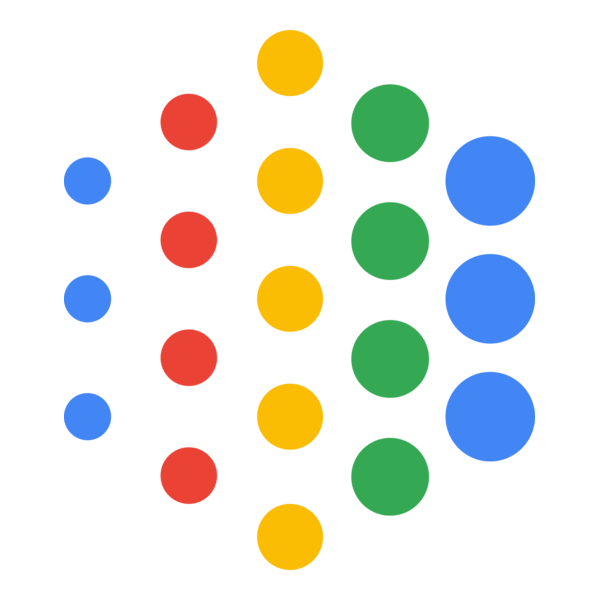
Google Vision AI: Complete Buyer's Guide
Enterprise-grade image recognition for ecommerce
Google Vision AI represents Google Cloud's comprehensive computer vision platform, delivering enterprise-grade image recognition capabilities specifically designed for ecommerce operations. The solution addresses core retail challenges through visual search optimization, automated catalog management, and fraud detection while leveraging Google's advanced machine learning infrastructure.
Market Position & Maturity
Market Standing
Google Vision AI occupies a strategic position in the enterprise cloud API segment, competing directly with Amazon Rekognition and Azure Custom Vision through specialized retail functionality and robust integration capabilities.
Company Maturity
Google's substantial investment in AI research and development, with the Vision AI platform benefiting from Google's broader machine learning capabilities and infrastructure scale.
Industry Recognition
Documented customer implementations across major retailers, with THE ICONIC and New Aim representing publicly disclosed enterprise deployments[35][51].
Strategic Partnerships
Strategic partnerships with system integrators and technology partners enable comprehensive implementation support.
Longevity Assessment
Long-term viability appears strong based on Google's continued investment in AI capabilities and cloud infrastructure.
Proof of Capabilities
Customer Evidence
THE ICONIC's implementation achieved 40% higher unbranded product discovery and 32% reduction in zero-result searches through multimodal search capabilities[51].
Quantified Outcomes
New Aim's partnership with Google Cloud for custom taxonomy development resulted in 99% uptime versus 97% pre-migration[35].
Case Study Analysis
Crop.photo's deployment demonstrates operational efficiency gains through automated background replacement capabilities, reporting faster image retouching workflows and reduced manual processing requirements[21].
Market Validation
Documented adoption across multiple retail verticals, with successful implementations spanning fashion, marketplace, and general retail applications.
Competitive Wins
Specialized retail functionality via the Vision Product Search API[53], providing purpose-built capabilities that general-purpose computer vision solutions lack.
Reference Customers
Publicly disclosed implementations across enterprise retailers, validating the platform's ability to handle production-scale operations and deliver measurable business outcomes.
AI Technology
Google Vision AI leverages Google's advanced machine learning infrastructure to deliver comprehensive computer vision capabilities through multiple specialized APIs designed for retail applications.
Architecture
Processing architecture supports batch annotation for up to 2,000 images per request[54], enabling efficient catalog management for large retailers.
Primary Competitors
Amazon Rekognition and Azure Custom Vision
Competitive Advantages
OCR capabilities across 50+ languages[43][53] that significantly exceed most competitors' language support, enabling global ecommerce operations without multiple vendor relationships.
Market Positioning
Google Vision AI competes primarily in the enterprise cloud API segment against Amazon Rekognition and Azure Custom Vision, with differentiation through specialized retail functionality and comprehensive language support.
Win/Loss Scenarios
Selection criteria favor Google Vision AI for organizations with existing Google Cloud investments and dedicated technical resources, while real-time processing needs may favor Amazon Rekognition's performance characteristics.
Key Features

Pros & Cons
Use Cases
Integrations
Pricing
Featured In Articles
Comprehensive analysis of Image Recognition for Ecommerce for Ecommerce businesses and online retailers. Expert evaluation of features, pricing, and implementation.
How We Researched This Guide
About This Guide: This comprehensive analysis is based on extensive competitive intelligence and real-world implementation data from leading AI vendors. StayModern updates this guide quarterly to reflect market developments and vendor performance changes.
58+ verified sources per analysis including official documentation, customer reviews, analyst reports, and industry publications.
- • Vendor documentation & whitepapers
- • Customer testimonials & case studies
- • Third-party analyst assessments
- • Industry benchmarking reports
Standardized assessment framework across 8 key dimensions for objective comparison.
- • Technology capabilities & architecture
- • Market position & customer evidence
- • Implementation experience & support
- • Pricing value & competitive position
Research is refreshed every 90 days to capture market changes and new vendor capabilities.
- • New product releases & features
- • Market positioning changes
- • Customer feedback integration
- • Competitive landscape shifts
Every claim is source-linked with direct citations to original materials for verification.
- • Clickable citation links
- • Original source attribution
- • Date stamps for currency
- • Quality score validation
Analysis follows systematic research protocols with consistent evaluation frameworks.
- • Standardized assessment criteria
- • Multi-source verification process
- • Consistent evaluation methodology
- • Quality assurance protocols
Buyer-focused analysis with transparent methodology and factual accuracy commitment.
- • Objective comparative analysis
- • Transparent research methodology
- • Factual accuracy commitment
- • Continuous quality improvement
Quality Commitment: If you find any inaccuracies in our analysis on this page, please contact us at research@staymodern.ai. We're committed to maintaining the highest standards of research integrity and will investigate and correct any issues promptly.